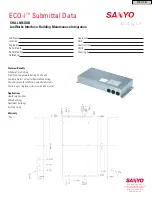
3Com Switch 8800 Configuration Guide
Chapter 19 OSPF Configuration
19-4
II. DR and BDR
z
Designated Router (DR)
In multi-access networks, if any two routers establish adjacencies, the same LSA will be
transmitted repeatedly, wasting bandwidth resources. To solve this problem, the OSPF
protocol regulates that a DR must be elected in a multi-access network and only the DR
(and the BDR) can establish adjacencies with other routers in this network. Two
non-DR routers or non-BDR routers cannot establish adjacencies and exchange
routing information.
You cannot specify the DR in the segment. Instead, DR is elected by all the routers in
the segment.
z
Backup Designated Router (BDR)
If the DR fails for some faults, a new DR must be elected and synchronized with other
routers on the segment. This process will take a relatively long time, during which, the
route calculation is incorrect. To shorten the process, BDR is brought forth in OSPF. In
fact, BDR is a backup for DR. DR and BDR are elected in the meantime. The
adjacencies are also established between the BDR and all the routers on the segment,
and routing information is also exchanged between them. After the existing DR fails,
the BDR will become a DR immediately.
III. Area
The network size grows increasingly larger. If all the routers on a huge network are
running OSPF, the large number of routers will result in an enormous LSDB, which will
consume an enormous storage space, complicate the SPF algorithm, and add the CPU
load as well. Furthermore, as a network grows larger, the topology becomes more likely
to take changes. Hence, the network will always be in “turbulence”, and a great deal of
OSPF packets will be generated and transmitted in the network. This will lower the
network bandwidth utility. In addition, each change will cause all the routes on the
network to recompute the route.
OSPF solves the above problem by partition an AS into different areas. Areas are
logical groups of routers. The borders of areas are formed by routers. Thus, some
routers may belong to different areas. A router connects the backbone area and a
non-backbone area is called Area Border Router (ABR). An ABR can connect to the
backbone area physically or logically.
IV. Backbone area and virtual link
z
Backbone Area
After the area partition of OSPF, not all the areas are equal. In which, an area is
different from all the other areas. Its area-id is 0 and it is usually called the backbone
area.
z
Virtual link
















































